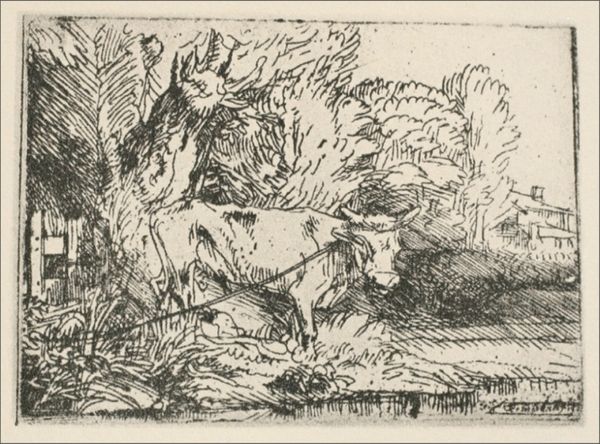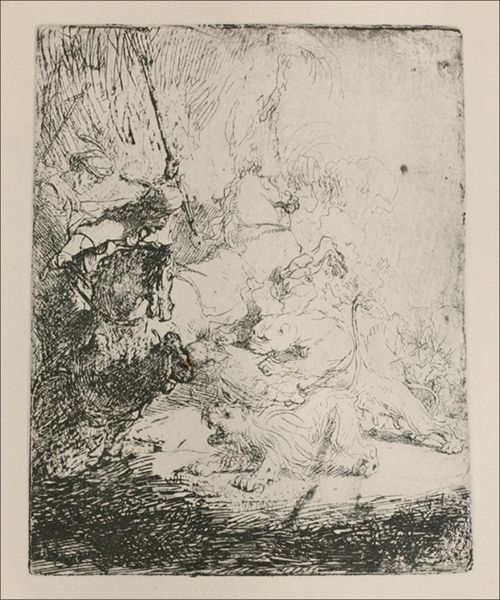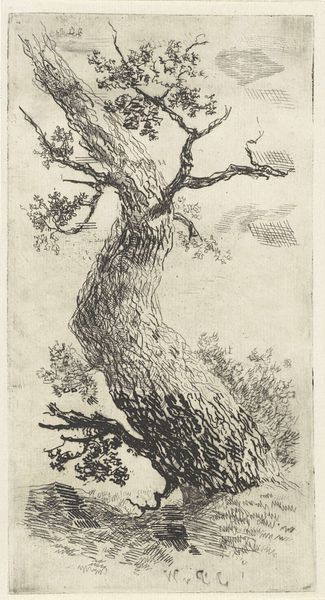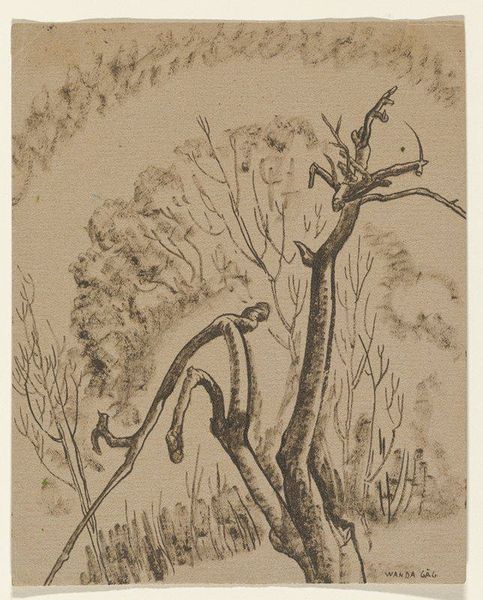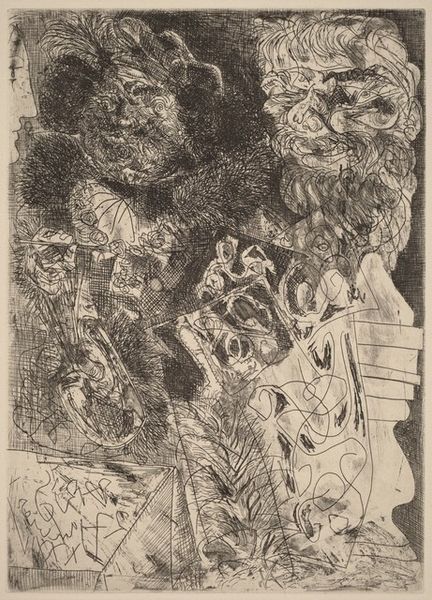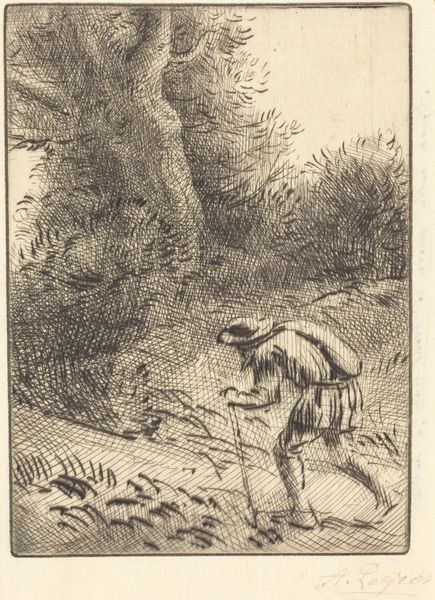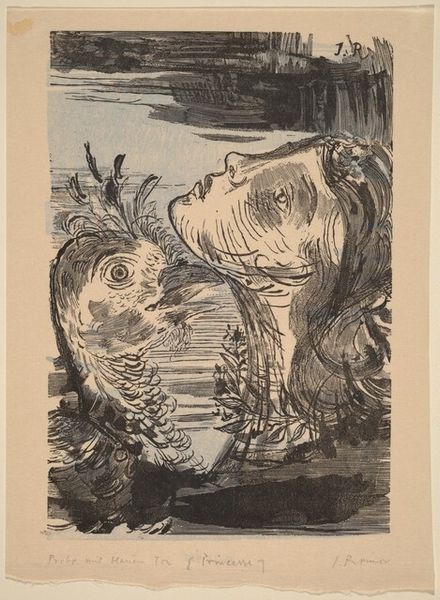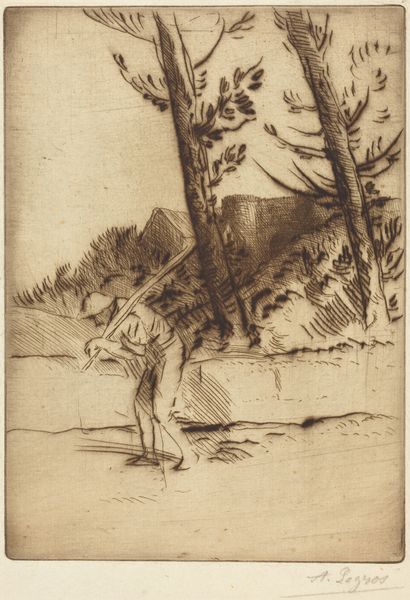
drawing, ink, pen
#
drawing
#
ink drawing
#
pen drawing
#
dutch-golden-age
#
landscape
#
figuration
#
ink
#
pen
#
realism
Dimensions: 8 x 7 cm
Copyright: Public domain
Curator: This drawing is entitled "Sketch of a Tree" by Rembrandt van Rijn, created around 1638 using pen and ink. Editor: It’s stark, isn’t it? The lines feel almost urgent, like he’s trying to capture a fleeting moment. Curator: Indeed. Look closely at the human figure in the lower left corner. Consider Rembrandt’s position in Dutch society, the social hierarchies and colonial narratives. This small figure situated within this imposing natural setting seems to address ideas of power and perspective in a way that mirrors larger themes in Rembrandt’s oeuvre. Editor: And those stark contrasts of light and shadow contribute, I think, to an emotional intensity. See how the rough, textured shading on that mass to the right pulls our eye—it almost feels ominous. Does the looming darkness have a spiritual weight to you? Perhaps hinting at mortality or the transient nature of earthly life? Curator: Possibly. We can examine this artwork through a lens of ecocriticism, observing how nature is framed during this period. The human relationship to the environment becomes complex, reflecting colonial ambitions and the exploitation of natural resources alongside its depiction in landscape art. The natural world, presented here, acts almost as a silent witness. Editor: Absolutely, it has an inherent agency. Even that seemingly simple cloud rendered with a few, almost frantic lines above the land feels charged with meaning. You know, clouds were used in Northern Renaissance paintings to suggest the presence of the divine…perhaps a visual tie to earlier belief systems? Curator: It’s an intersection of cultural, political and artistic factors. How do individual and collective identities intersect with these representations of landscape? Rembrandt was influenced by socio-political climates of his time, which influenced the art he created. Editor: He translates the human experience with powerful universal symbols that persist centuries later. It really makes you think about nature and humanity. Curator: Exactly. It is in such moments, studying artwork from this intersectional perspective, that our understanding evolves beyond conventional art history narratives, offering insights into ourselves. Editor: Well said, an experience of shared human legacy captured in ink.
Comments
No comments
Be the first to comment and join the conversation on the ultimate creative platform.
